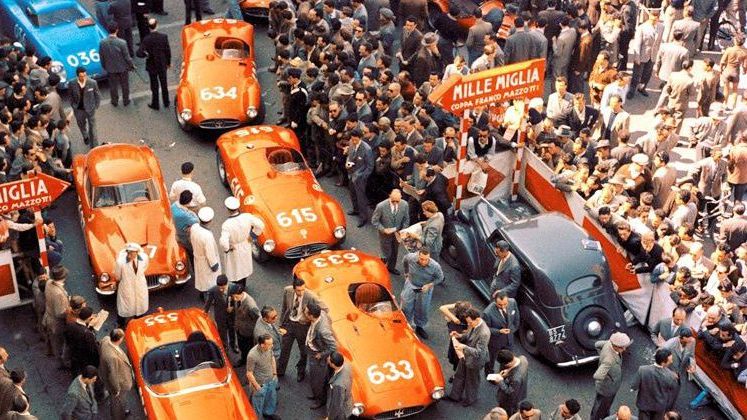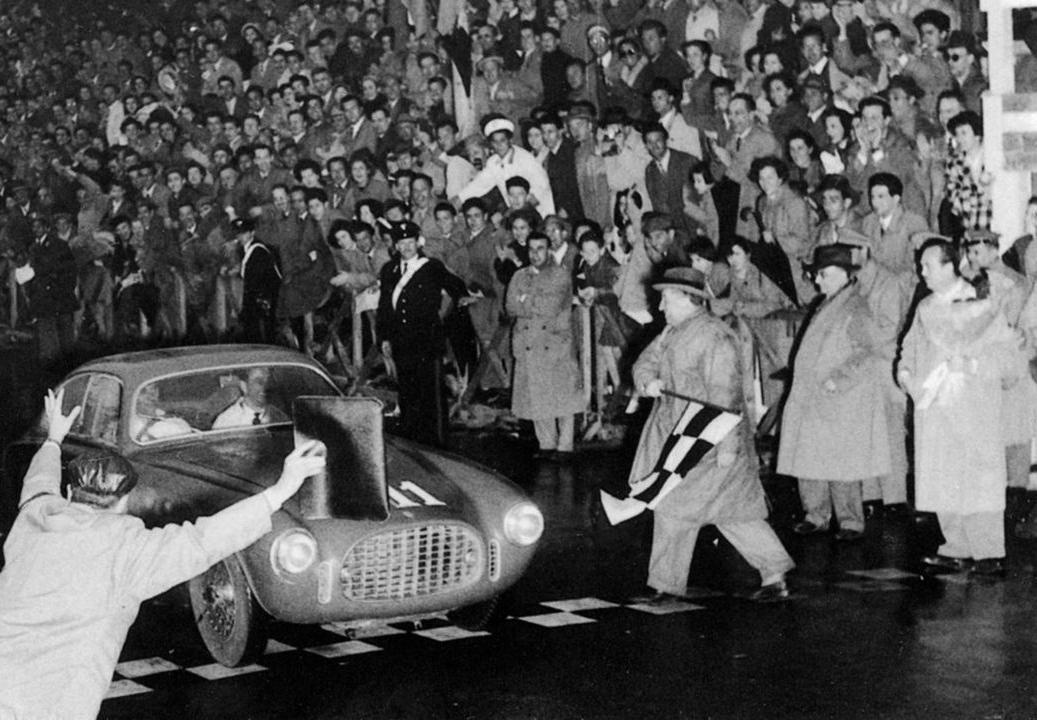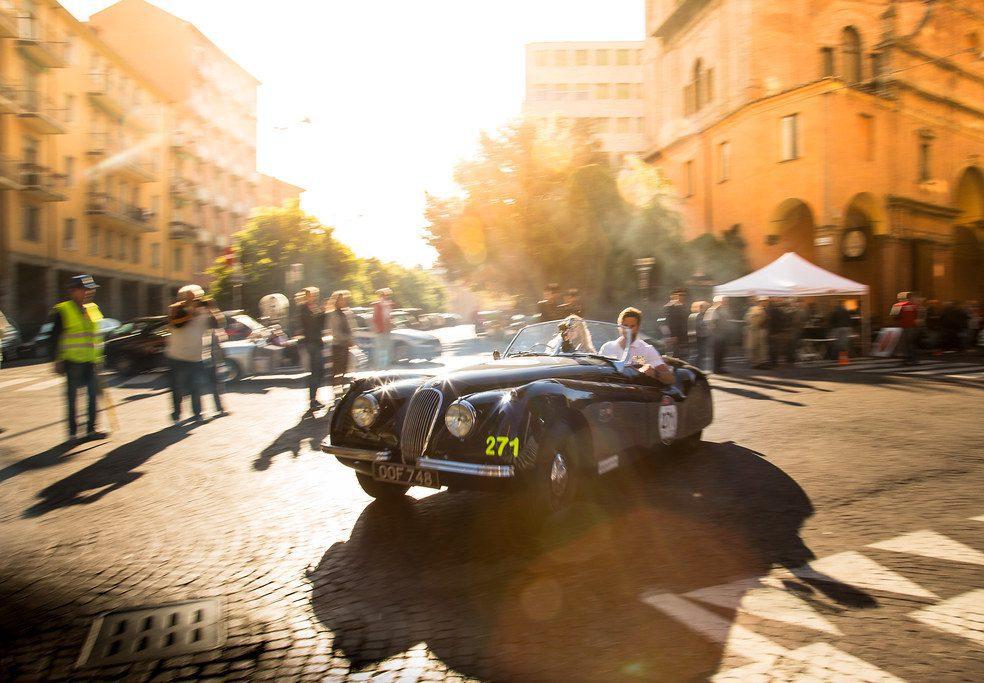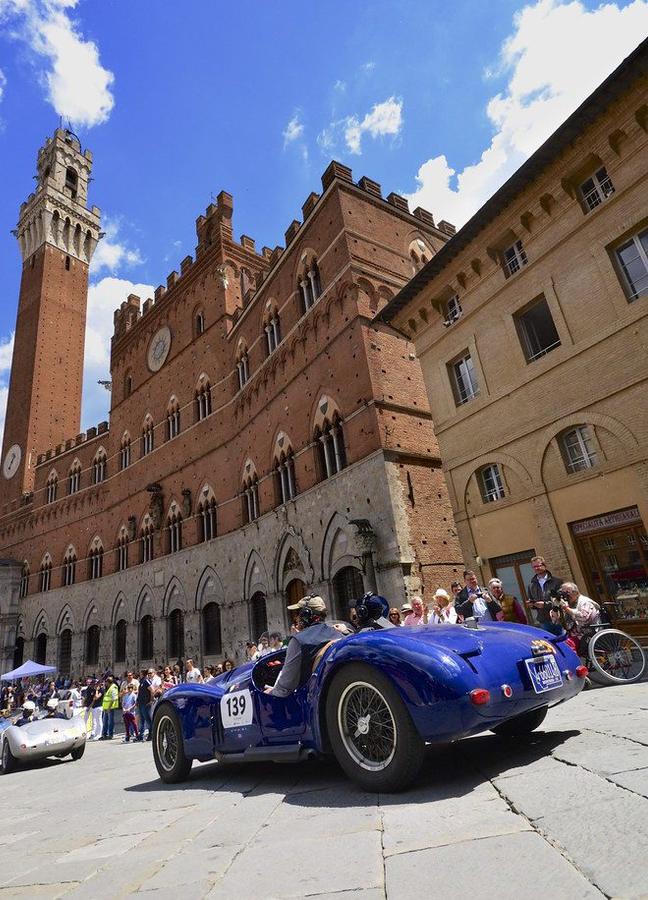

Words: Jonathan Wells
Imagine, for a moment, that you’re a young Italian nobleman living through the roaring 1920s. Shouldn’t be too difficult — we do it all the time. You have a cappuccino for breakfast, cocktails by lunchtime and there’s more oil slicking back your hair than it takes to keep your 4.5-litre grand tourer going. Life is good.
But bad news is motoring over the horizon. The Italian Grand Prix, held annually in your home town of Brescia, is moving to Monza — leaving you and your noble, high society friends stripped of a petrol-powered event to enjoy. So what do you do? Well that’s easy. Start your own.
And that, in a nutshell, is how the Mille Miglia roared into life. In 1927, Counts Aymo Maggi and Franco Mazzotti — with a little help from sports manager Renzo Castagneto, motoring journalist Giovanni Canestrini and a host of wealthy investors — held the first of their nationwide figure-of-eight endurance races. The course sped from Brescia to Rome and back, with 77 all-Italian competitors racing to cover just over 1,000 miles in the fastest time.
Why was the Mille Miglia so special?
The iconic race picked up speed as it rumbled on throughout the 20th Century. As more and more daredevils and racing drivers heard about it, more wanted to win it. Just three years after its inaugural run, Italian driver Tazio Nuvolari was chasing victory so seriously that he turned off his headlights on the home stretch of the 1930 race and, in the dead of night, overtook the oblivious odds-on winner and triumphed.

Such antics were typical of the original Mille Miglia — a race that even survived World War II to drive another day, and pioneered engineering and automotive design all the way through to the 1950s. And that’s when things really shifted into gear.
Mercedes had attempted to win the Mille Miglia in 1952, but were let down by the underpowered 300 SL Gullwing. By 1955, they had used a Formula One car to create the considerably punchier and much more promising Mercedes-Benz 300 SLR. This, they were certain, would be the car to win them the title.
The man who would win them the title? The late, great Sir Stirling Moss. The racing legend relied on navigator Denis Jenkinson for his directions, who read his notes off a home-made roller scroll in the passenger seat. Thanks to German engineering and English grit, the duo ended up completing the 992-mile race in 10 hours, 7 minutes and 48 seconds — an average speed of 99mph.
When did the original Mille Miglia end?
In 1957, after two fatal crashes claimed the lives of more than ten drivers and spectators, event organisers eased off the gas. Between 1958 and 1961, the race became a more sedate affair; a grand tour around the northern half of Italy driven at legal speeds. And, after several years, even this idea was parked.
But all was not lost — and the spirit of those young Italian noblemen had not flickered out fully. Because, in the 1970s, a group of motor enthusiasts decided the Mille Miglia should be reborn. After prototype events were held, 1982 saw the first true retrospective of the Mille Miglia — except this time it wasn’t a flat-out race. It was a rolling exhibition of some of the world’s most beautiful cars; a celebration of the race that was.
What is the Mille Miglia like today?
The modern Mille Miglia attracts names just as exciting and renowned as the original. Even Sir Stirling Moss came back for a blast around the course in 1987. Daniel Day Lewis, David Gandy and Jenson Button have driven in the race — along with Italian politicians, American movie producers, and even the Mayor of Moscow. The race attracts enthusiasts from all walks of life — who get to mix when the event reaches its halfway point outside Rome’s beautiful Castel Sant’Angelo.
There are summery stretches along the Adriatic Coast and white dust roads on the way to Florence — but also sometimes snow in the Terminillo Mountains, depending on the time of the year the race is held. Which brings us to 2020.
The 2020 Mille Miglia, as with every other major world event, was disrupted by the outbreak of the coronavirus. Planned to take place in May, entrants will now fire up their collective engines this very week — the event pushed through by determined sponsors including Mercedes-Benz, Alitalia and Franciacorta sparkling wine. And, of course, by official timekeeper and title sponsor Chopard — who is as closely aligned with the event’s values as any brand, and even launched two new and exclusive Mille Miglia timepieces earlier this year.
What should we be looking out for this year?
We may have had to wait a little longer for this year’s Mille Miglia, but it’s shaping up to be a treat. The race will start this Thursday with competing cars leaving Brescia and driving along Lake Garda — passing through Villafranca di Verona, Mantova and Ferrara. After passing through San Marino and Rieti, entrants will then make their way to Rome, where the second day will end with a parade along the platform in Via Veneto.

The longest leg, on the third day, sees drivers tear from Rome to the Piazza al Campo in Siena, before pushing on a little further to Parma, the Italian Capital of Culture 2020, for a final evening. And day four is a final sprint, via Bergamo, to the arrival ramp of Viale Venezia in Brescia — the same spot from which drivers in the 1927 Mille Miglia started 93 years ago.
So who to look out for? With over 400 cars taking part in the race this year, there are plenty of people to keep diehard motoring fans entertained. We’re particularly looking forward to a pair of 1952 Aston Martin DB2s making an appearance, as well as a glorious Jaguar XK120 and a Porsche 356 Speedster not unlike this up-for-auction offering.

But, whichever wheels you’re hoping have a good run, the cutthroat, life-and-death days of the Mille Miglia are past us. Today, the event is a simple, beautiful celebration of motoring heritage — where every driver hopes every car rolls safely across the finish line. And, in 2020, that sounds like just the kind of camaraderie we need…
Want more motorsport history? This is the high-octane history of the 24 Hours of Le Mans…
Become a Gentleman’s Journal member. Find out more here.


